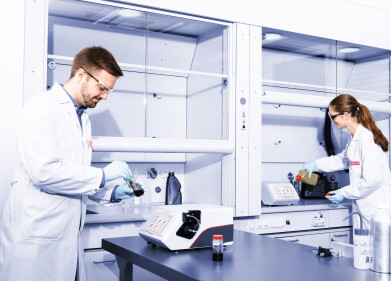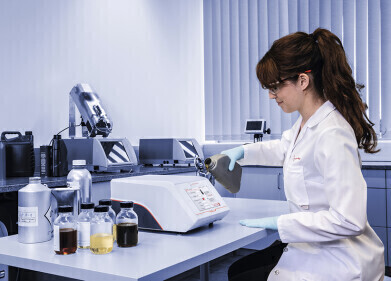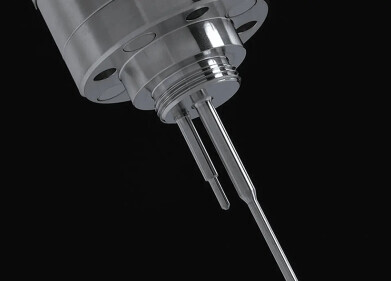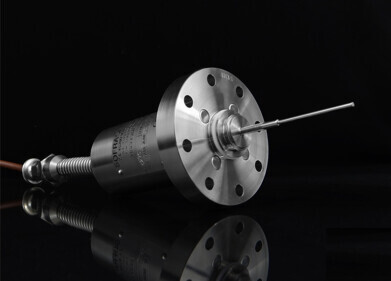Viscometer
Smart and Portable Viscosity Testing for Lubricating Oils
Oct 16 2008
Kinematic viscosity and the Viscosity Index (VI) are critical values for manufacturers and customers of lubricating oils as well as for oil testing laboratories. Kinematic viscosity changes depending on the temperature of the oil. Especially in automotive engines lubricants have to perform well in cold as well as in heated environment. To ensure optimal work of automotive engines, the viscosity range for lubricants is defined to gain optimal performance and to prevent friction, wear and tear.
To give a good estimate about the behaviour of lube oils at different temperatures, the kinematic viscosity is measured at 40°C and 100°C and the Viscosity Index (VI) is calculated according to ASTM D2270. A high VI indicates the lubricants viscosity is not much affected by temperature whereas a low VI implies a tight link between viscosity and temperature. The VI thus is treated as a quality indicator for lubricants.
When assessing kinematic viscosity according to ASTM D445 classical capillary viscometers rely on a couple of uncertainties: For example measurements have to take into account site uncertainty (0.19%), a combined extended uncertainty of the accepted reference value of the certified viscosity standard, a standard error in instrument calibration, and the temperature instability of the bath temperature with +/- 0.02°C, which can result in almost 0.5% deviation in viscosity results alone caused by temperature instability. All this uncertainty adds up into a confidence interval, in which the true viscosity value of the sample is with 95% certainty.
Looking at this one begins to understand why reproducibility is a key problem when measuring kinematic viscosity with capillary viscometers: Round robins conducted with capillary viscometers often miss the reproducibility criteria listed in ASTM D445.
Grabner Instruments (Austria) offers a smart solution for testing kinematic and dynamic viscosity. The automatic and compact Minivis 445 combines a portable falling ball viscometer and an integrated, highly precise density meter. Minivis 445 measures the dynamic viscosity (ç) and the density (ñ) and then calculates the kinematic viscosity (Ã) with the simple formula: à = ç / ñ . This is an absolute method, not relying on uncertainty factors. Angle adjustment and inertia moment correction is done automatically, thus guaranteeing precision of the results according to ASTM D445, even for non-ideal viscous fluids. Because of its smart design Minivis 445 avoids certain drawbacks of classical capillary viscometers, such as huge temperature control baths or the laborious cleaning of glass tubes with chemicals, to prevent misleading surface tension effects.
Minivis 445 was designed for the petroleum industry and thus covers the viscosity range of 0.2 to 2000 cSt/mm2/s. Its improved reflection sensors and special balls make it possible to cover a wide range of applications, from transparent to very opaque samples such as used and heavy oil. The measurement cell is easily accessible and changeable and the temperature is adjusted automatically from -20 to 110°C by use of a fast reacting Peltier element. This allows for rapid throughput and automatic measurements of the viscosity index, eliminating the
time consuming temperature adjustments of water baths in capillary viscometers.
Digital Edition
PIN 25.5 Oct/Nov 2024
November 2024
Analytical Instrumentation - Picturing Viscosity – How Can a Viscometer or a Rheometer Benefit You? - Sustainable Grease Formulations: Evaluating Key Performance Parameters and Testing Method...
View all digital editions
Events
Jan 20 2025 San Diego, CA, USA
Jan 22 2025 Tokyo, Japan
Jan 25 2025 San Diego, CA, USA
SPE Hydraulic Fracturing Technology Conference and Exhibition
Feb 04 2025 The Woodlands, TX, USA
Feb 05 2025 Guangzhou, China



















